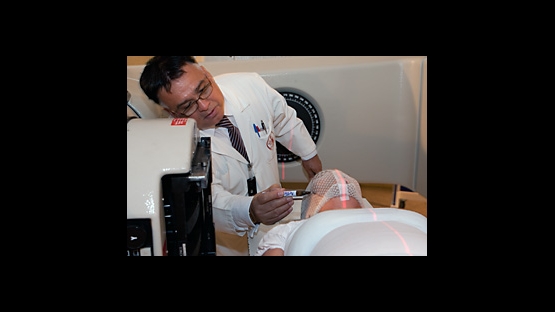The IAEA, through its technical cooperation programme, helps countries use nuclear techniques to improve the health of their citizens by facilitating ground-breaking research, providing life-saving equipment and helping states train and retain essential medical staff. The programme supports the needs of health care professionals and technologists, policy makers, regulators, universities and patients.
This involvement is spread over a wide range of disciplines, including the control of communicable diseases like HIV/AIDS, the detection of drug-resistant strains of malaria and tuberculosis, the expansion of cancer therapy, and of nuclear medicine diagnosis, and the improvement of the nutritional status of children and women to combat malnutrition.
In the area of cancer management the IAEA´s Programme of Action for Cancer Therapy (PACT) helps developing countries build sustainable programmes for comprehensive cancer control.
Responding to Countries´ Needs
Human health is the top priority area for all IAEA Member States. Projects to address cancer, to support the use of nuclear medicine and address nutrition are among the most requested. In 2009 activities in health constituted the largest proportion (almost 21%) of technical cooperation projects.
Member States also regularly seek the IAEA´s help with quality assurance in nuclear medical treatment.
"The Agency not only provides technology and training, but plays an integral role in ensuring that countries can handle the technology safely. So we have projects aimed at strengthening nuclear regulatory capacity and safety, in order to support countries´ human health programs," says Juan Antonio Casas-Zamora, Director of the IAEA Technical Cooperation Division for Latin America.
As well as planning projects well in advance, the IAEA also, in extreme cases, responds to the emergency needs of its Member States. After the devastating earthquake in 2010, Haiti for example received eight x-ray machines from the Agency.
Health Worldwide
Here are a few more examples of the difference that the IAEA´s involvement has made around the world:
The technical cooperation project in Gabon supported the establishment of a systematic neonatal mass-screening programme to identify babies with sickle cell disease using nuclear techniques which include high pressure liquid chromatography.
Sickle cell disease is an incurable blood disorder, but early diagnosis means that life-extending treatment and care can be initiated soon after birth. Counselling is also provided for parents with affected or carrier newborns.
Mauritania inaugurated its first radiotherapy centre on Saturday, 27 November 2010. This means that cancer patients will no longer have to travel abroad for treatment. Mauritania and the IAEA´s Technical Cooperation Programme worked together for two years to make the centre a reality. The facility will cater to patients who suffer from various types of cancers, using the most modern methods in radiotherapy.
Cervical cancer is the second most common cancer among women worldwide, with about 83% of all cases occurring in developing countries like El Salvador.
Working with two other organisations - the Instituto del Cancer de El Salvador (ICES) and the Rosales National Hospital - the IAEA has provided training for government and hospital staff in order to strengthen care and ensure that the radiotherapy programme is safe and effective. Equipment has also been upgraded under the project.
In the first 27 months after the centre was opened, over 1 000 patients had been treated.
Uruguay did not have the capacity to radio-sterilize tissue grafts used to treat burn patients. The grafts were instead sent to other countries, which was very expensive. Because the IAEA Technical Cooperation programme provided equipment and training, Uruguay now produces its own tissue grafts that are used to heal different skin and musculoskeletal pathologies. This means that more burn patients can now be treated.
Through a project completed in 2001, state-of-the-art positron emission tomography (PET) technology was introduced for the first time in central and Eastern Europe. In 2006, construction of a new PET centre was launched in Brno, in the Czech Republic. This centre opened its doors to patients in 2007.


